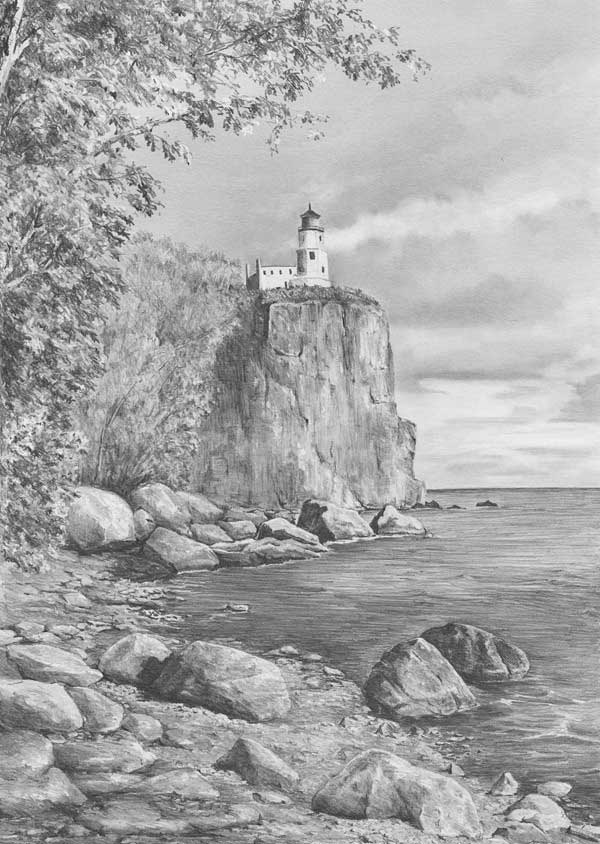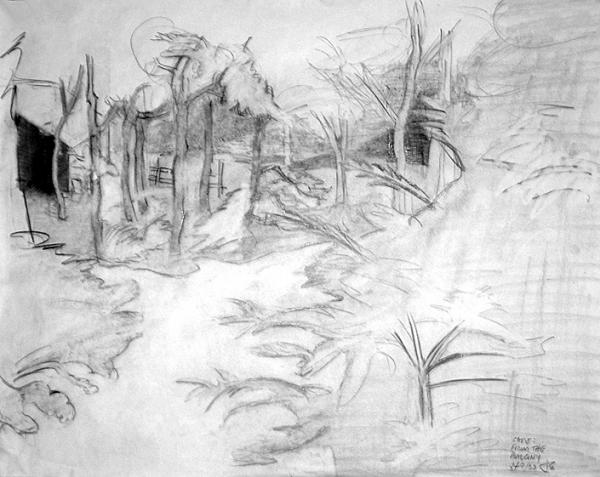
Landscape Drawings Pencil
Try Using a Hard Lead Pencil to Draw Distant Landscape Detail
By Michael Dale - Ezinearticles
Some artists find it difficult to distinguish background detail from drawing middle-distance and foreground detail. Some of the reason for this could be that some artists can see more detail...
* If you are long-sighted you can see far-off detail
* If you suffer short-sightedness it is less likely that you can see distant detail
For landscape drawing it could be said that a short-sighted artist has an advantage... Unseen distant details will be replaced by general shapes. For a distant mountain, a simple outline could be enough to suggest its existence.As a long-sighted artist, you could be tempted to draw everything you can see. This could include detail that is close to your viewpoint and that from far away. It is possible that you can see every ridge and gully of a distant hill, broken only by mist and snow.
By Michael Dale - Ezinearticles
Some artists find it difficult to distinguish background detail from drawing middle-distance and foreground detail. Some of the reason for this could be that some artists can see more detail...
* If you are long-sighted you can see far-off detail
* If you suffer short-sightedness it is less likely that you can see distant detail
For landscape drawing it could be said that a short-sighted artist has an advantage... Unseen distant details will be replaced by general shapes. For a distant mountain, a simple outline could be enough to suggest its existence.As a long-sighted artist, you could be tempted to draw everything you can see. This could include detail that is close to your viewpoint and that from far away. It is possible that you can see every ridge and gully of a distant hill, broken only by mist and snow.

However, your ability to see far off detail doesn't make you a good landscape artist. Too much detail tends to bring the background visually closer. It flattens the image, with the result that the sense of distance can be lost.Landscape drawing relies on an artist's ability to grade. In simple terms, 3 levels of detail are required...
1. High levels of detail are required for drawing the foreground
2. Slightly less detail is needed for middle-ground
3. Little detail is necessary for distance

This is easy to do for an artist who can't see distinct distant features. Yet, if you can see the whiskers of a wild cat running on the hillside, you will be tempted to draw what you can see. Fortunately, there is a way to reduce the effects of drawing too much detail. To overcome the problem...
* Start with the background first. Try using a fine-pointed hard graphite lead pencil (H or 2H)
* For middle-ground detail use a slightly softer pencil (HB or B). If you want to, you can combine with a little hard lead pencil
* To draw foreground detail, you can use a wide range of softer pencils to create as little, or as much detail required.

As drawing progresses, the earlier drawn background detail begins to recede. The thin faint lines begin to be overpowered by the heavier darker lines of middle-distance and foreground lines. Using a range of pencils gives you the ability to grade the detail... lighter line-weights for distance... ranging through light to heavy for middle distance and foreground.
This gives you the power to concentrate on a chosen focal point. You can now make your landscape drawing look real, with foreground subject detail standing out from the background.




Landscape Drawings Pencil

No comments:
Post a Comment
Hi, please feel free to share your comment here.
For example: Which pictures is the best?
Thanks,
Admin